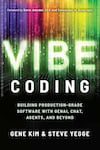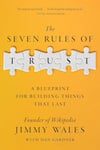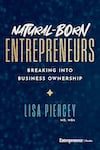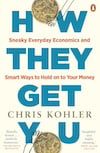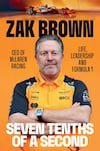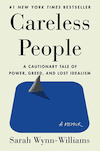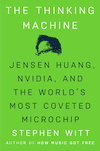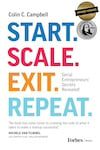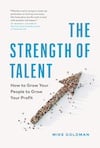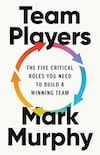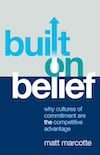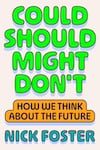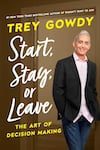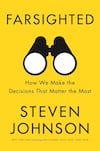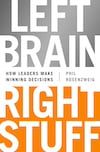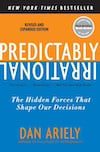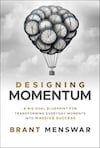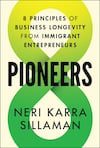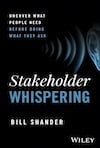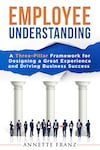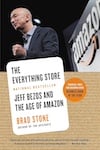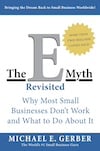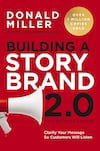Brad Feld is a veteran tech entrepreneur, early-stage investor, and co-founder of Techstars, a venture fund and startup accelerator. He’s also a prolific author. I asked him how writing helps shape his ideas and what prompted his latest book, “Give First,” which focuses on the value of mentorship.
Jean Gazis: What’s the origin of “Give First“?
Brad Feld: The idea has been rattling around in my head for over a decade. Back in 2012, when I was writing “Startup Communities,” I realized one of the secrets to the success of Boulder, Colorado, was a philosophy I called “give before you get.” It’s a simple idea: be willing to help someone without a clear expectation of what’s in it for you.
It wasn’t altruism; it was a more effective, long-term way to build a healthy system. Around the same time, this ethos was becoming deeply baked into Techstars, which we described as a “mentor-driven accelerator.”
Then, in 2014, my friends at Techstars, led by David Cohen and Gregg Cochran, started using the hashtag #GiveFirst on Twitter. It was cleaner, stickier, and captured the essence of the idea. That’s when I knew it deserved its own book.
Gazis: Give us examples of how you’ve benefited from a giving-first mindset?
Feld: My go-to example is the origin story of Techstars itself. I used to hold “random days,” where anyone could book a 15-minute meeting with me. It was an attempt to be open and accessible without destroying my calendar.
That’s how I met David Cohen. In 2006, he came in with a brochure for a mentorship and investment program for startups.
I loved the idea. Ten minutes into our 15-minute slot, I’d already committed to invest, and I stepped out to call my friend Jared Polis, then an entrepreneur and now the governor of Colorado, who agreed to join us on the spot. That unplanned gift of time and capital turned into Techstars, which has since funded over 4,000 companies. There was no way to predict that return.
Another is the evolution of Pledge 1%. The idea started when Ryan Martens of Rally Software, a web development platform, and I co-founded the Entrepreneurs Foundation of Colorado in 2007, based on the Salesforce 1% model, wherein the founders committed 1% of the company’s equity, technology, and employees’ time to a better world.
Pledge 1% has generated nearly $3 billion for communities globally and spawned a powerful network of founders helping each other. The financial return was for the community, but the network and relationship returns have been immeasurable.
Gazis: What’s your goal of “Give First,” the book?
Feld: I hope readers break out of a transactional mindset. We live in a “what’s in it for me?” world. “Give First” is a different philosophy. It’s not about being a martyr or working for free. It’s about putting energy into a relationship or a system without defining the parameters of the return up front. You still expect to get something back, but you don’t know when, from whom, or in what form.
The result is a positive-sum, long-term game. The ensuing knowledge, trust, and opportunities are often far greater than anything you could have engineered with a quid-pro-quo approach. My goal is for people to see that it’s a powerful and sustainable way to build a career, a company, and a community.
Gazis: Why do you write books? Are they relevant in our digital world?
Feld: Absolutely. In an age of infinite distraction, a book is an anchor. It’s a technology for focused, deep thinking that a tweet, a post, or a podcast can’t replicate. Long-form writing forces both the writer and the reader to slow down and grapple with nuance. A book is a durable artifact. In a world of fleeting digital content, a well-argued, 250-page narrative is a powerful signal that an idea is worth spending time with.
Writing debugs my own thinking. I have ideas and stories swirling around from decades of investing and mentoring. The process of putting them into a coherent narrative forces me to clarify what I believe. It’s how I find the signal in the noise.
The second reason is scale. I can only mentor so many founders one-on-one. A book allows me to share the lessons — and the scar tissue — with anyone, anywhere. I explored the give-first philosophy on my blog and in practice at Techstars for 15 years. Putting it all in a book makes the framework accessible to anyone.
Gazis: You’ve written about mentorship in business. Do you have a mentor?
Feld: My most important mentor, in business and life, was Len Fassler. I dedicated “Give First” to him. He taught me how to behave in business relationships and how to show up for people, especially when things are hard. I’ll never forget being at his house in 2001, completely crushed by the dot-com bust. He put his hands on my shoulders and said, “Suit up. They can’t kill you, and they can’t eat you. We’ll get through it.” That’s a story, not a spreadsheet. It’s guided me ever since.
As for writing, Adam Grant’s book “Give and Take” provided a framework for the ideas I had explored intuitively for years. And Dov Seidman’s book “How” emphasized that our manner of doing things matters more than what they are. Both write with a clarity and moral conviction that I aspire to.
Gazis: What books do you read?
Feld: I’m a voracious reader. My wife Amy and I take a week off the grid every quarter, and I usually get through a book a day. That sustained immersion is where I do some of my best thinking and pattern recognition.
My reading is all over the place, and I track every book on Goodreads. My infinite pile of books has a lot of fiction, biography, history, philosophy, and some business, especially by friends. I love discovering how different systems work, whether it’s a company, a brain, or a fictional universe. The variety is essential and feeds my curiosity, which is the fuel for everything I do, including writing.


